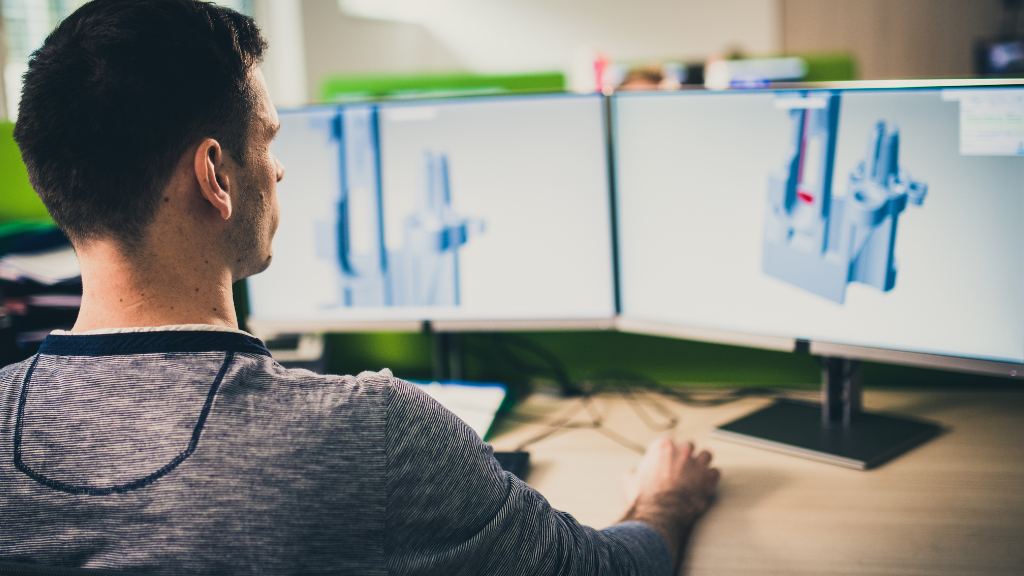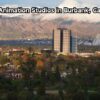
Introduction
3D animation rendering stands as a pivotal phase in the digital animation process, transforming meticulously crafted models into stunning visual stories. This process is not just about adding the final polish; it’s a crucial step that brings life to the animator’s vision, infusing realism and depth into every frame. Rendering in 3D animation is akin to a painter’s last stroke, turning a sketch into a masterpiece. It’s here that light, texture, and color merge to create the magic that captivates audiences worldwide.
The Basics of 3D Animation Rendering
What is 3D Animation Rendering?
3D animation rendering is the process where computer-generated 3D models are converted into 2D images or animations. This transformation is not instantaneous; it’s a complex computation where light simulations, texture mapping, and shading come together to produce the final image or sequence. Each frame of the animation, which typically runs at 24 to 30 frames per second, must be individually rendered, making the process both resource-intensive and time-consuming. However, the result is a fluid, lifelike animation that can convey stories and messages with unparalleled impact.
Key Stages in the 3D Animation Process
The 3D animation process is a journey through several stages, each critical to the project’s success. It begins with pre-visualization or ‘previs’, where rough storyboarding and basic animations set the project’s foundation. Next, comes modeling, where characters and environments gain their shape. Rigging and skinning follow, giving the models their skeletons and muscles for movement.
After this, the animation stage breathes life into the models with movement. Texturing then adds surface details, making the models visually rich and closer to reality. Lighting plays a crucial role next, simulating realistic light effects. Finally, we reach rendering, where all these elements are meticulously compiled to create the final image or animation sequence. This stage is where the true visual style and quality of the animation come to fruition, showcasing the skill and artistry involved in 3D animation.
Factors Influencing Rendering Time
1.Complexity of the Animation
The intricacy of a 3D animation plays a significant role in rendering time. Complex scenes with multiple elements, such as detailed characters, elaborate backgrounds, and dynamic lighting, require more computational power and time to render. Each additional element adds layers of complexity, thereby increasing the rendering duration. Animations with simple designs and fewer elements, conversely, can be rendered more swiftly.
2.Quality and Resolution of the Final Output
Higher resolution and quality settings directly impact rendering time. High-definition outputs, such as 4K, demand more processing power due to the increased pixel count compared to standard resolutions like 1080p. Additionally, higher quality settings that include advanced lighting and shadow effects, texture details, and particle effects will extend the rendering process.
3.The Power of the Rendering Hardware
Rendering hardware is a critical factor in determining the speed of the rendering process. Powerful graphics processing units (GPUs) and high-performance computing systems can significantly reduce rendering times. The more robust the hardware, the quicker it can process the complex calculations required for rendering high-quality 3D animations.
4.Software Capabilities and Efficiency
The efficiency and capabilities of the rendering software also play a crucial role. Some software is optimized for faster rendering times, while others provide higher quality at the cost of longer rendering periods. The choice of software can influence the overall workflow and efficiency of the rendering process.

How long does it take to render a 3D animation austinvisuals
Average Rendering Times: A General Overview
Rendering Time for Short Animations
Short animations, such as those lasting a few seconds to a minute, can vary significantly in rendering time. Depending on the complexity and quality, these can take anywhere from a few hours to several days. Short animations with minimal complexity are often rendered more quickly.
Timeframe for Feature-Length 3D Animations
Feature-length animations, akin to those seen in movies, require a substantially longer rendering time. These projects can take weeks to months, depending on the length of the animation and the factors mentioned earlier. The high level of detail and the length of these animations contribute to the extended rendering times.
Real-Time Rendering: How It Differs
Real-time rendering, used primarily in video games and interactive media, differs significantly from traditional rendering methods. It is designed to render graphics instantaneously, providing immediate feedback and interaction. While not as high in quality as pre-rendered animations, real-time rendering is continuously evolving, bridging the gap in quality while offering the advantage of immediacy.
Accelerating the Rendering Process
Optimization Techniques for Faster Rendering
Optimizing the rendering process is crucial for efficiency. Techniques include simplifying scene geometry, optimizing textures, and reducing the complexity of lighting and shadows. Effective use of these methods can significantly decrease rendering times without compromising the quality of the final output. Additionally, strategic planning in the animation process, such as rendering in passes and compositing them later, can also expedite the process.
The Role of Advanced Hardware and Software
Investing in advanced hardware and software is essential for accelerating rendering. High-performance GPUs, efficient CPUs, and ample RAM can drastically reduce rendering times. Similarly, using software that is optimized for speed and supports features like distributed rendering or cloud-based solutions can further enhance efficiency. These technological advancements play a pivotal role in handling complex rendering tasks more swiftly.
Outsourcing Rendering Tasks: Pros and Cons
Outsourcing rendering tasks can be a viable option. It offers access to high-end rendering farms and specialized expertise, potentially speeding up the process. However, it may involve additional costs and requires careful selection of a reliable outsourcing partner to ensure quality and security of the rendered data.
Austin Visuals’ Approach to Efficient Rendering
How Austin Visuals Optimizes Rendering Time
At Austin Visuals 3D Animation Studio, we prioritize efficient rendering. Our approach includes meticulous scene optimization, use of proxy models, and strategic lighting setups. We focus on balancing high-quality output with time efficiency, ensuring that each project is delivered without unnecessary delays.
Cutting-Edge Tools and Techniques Used by Austin Visuals
We employ cutting-edge tools and techniques in our rendering processes. Our studio is equipped with state-of-the-art hardware and the latest software, enabling us to handle demanding rendering tasks effectively. We also stay abreast of industry advancements, incorporating new technologies and methods to continually enhance our rendering capabilities.
Client Case Examples from Austin Visuals
Our portfolio includes diverse projects where we’ve significantly optimized rendering times. For instance, in a recent architectural visualization project, we reduced rendering time by 30% through intelligent scene optimization, without compromising on detail. In another case, for an animated short film, we utilized cloud-based rendering solutions to meet tight deadlines, delivering high-quality animations efficiently.
Our Clients include:

Conclusion
In summary, the duration of 3D animation rendering is influenced by a multitude of factors, including the complexity of the animation, the desired quality and resolution, the capabilities of the rendering hardware, and the efficiency of the software used. Understanding these elements is crucial for managing expectations and timelines in 3D animation projects.
At Austin Visuals, we are deeply committed to balancing efficiency with quality. Our team employs a blend of optimization techniques, advanced technology, and strategic planning to ensure that rendering times are minimized without compromising the high standards of our output. Our expertise and dedication to innovation position us as a leader in the field, capable of delivering exceptional results within reasonable timeframes.
For those seeking tailored 3D animation services that prioritize both speed and quality, Austin Visuals is the go-to partner. We invite you to contact us to discuss your specific needs and learn how our expertise can bring your vision to life with efficiency and excellence..



